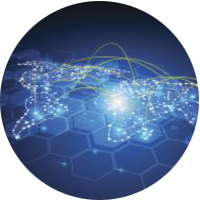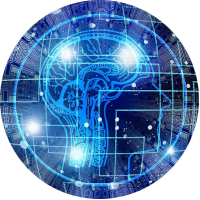At the Intersection of
Knowledge Graph and Artificial Intelligence… Anzo
The Artificial Intelligence (AI) space is evolving rapidly, with data science organizations identifying knowledge graphs as a key capability for successful AI projects. However, we often hear confusion about the role of the knowledge graph in AI and vice-versa. Anzo is at the intersection of knowledge graphs and AI, both enabling and using AI techniques through its innovative use of semantics and graph to address highly complex data modeling, blending, and analytic challenges.
Spend more time on AI model development
Anzo simplifies and accelerates data wrangling and preparation, allowing data scientists to spend more time on AI model development.
The knowledge graph provides a medium of rich data integration and blending in support of agile, iterative data preparation required for development of AI models. Anzo’s in-memory graph engine, AnzoGraph, and associated tooling make this process easy and interactive, even for very large knowledge graphs. Anzo’s automated query generation also automates and accelerates feature engineering across the knowledge graph.

Analyze data natively in the knowledge graph
Anzo includes a wide variety of built-in machine learning capabilities to analyze data natively in the knowledge graph and in connected environments.
Knowledge Graphs offer unique analytic and data science capabilities needed to add AI to your operational applications including smart recommendations and comparisons. AnzoGraph natively supports many data science primitives and graph algorithms required for these use cases.
Anzo also provides extensibility and direct connectivity to the data science ecosystem to take advantage of the pace of innovation in AI and Machine Learning capability through APIs, extension points, notebook integrations, and support for standard protocols, including Apache Arrow Flight. (Note: Apache Arrow Flight is an emerging de facto standard for integrating popular data science environments like Pandas, TensorFlow, and Spark MLlib.)

AI to driving knowledge graph management process
Anzo uses AI to drive the knowledge graph management process, accelerating implementation and resulting in a smarter higher impact knowledge graph platform.
Building and managing knowledge graphs comprising many sources, systems, and use cases involves many tasks best suited for subject matter experts. However, because of the richness of metadata and models available, knowledge graphs offer abundant opportunities to automate menial or repetitive elements.
Anzo takes advantage of many of the above AI and data science capabilities to automate building and managing the knowledge graph. For example, Anzo uses deep profiling to suggest possible connections between disconnected parts of the graph – comparing millions of possibilities at scale in minutes with AnzoGraph.


